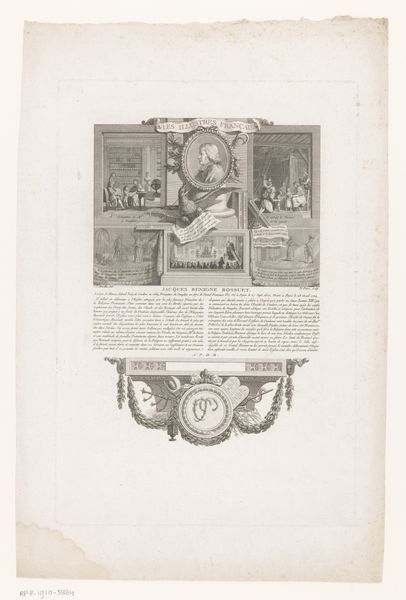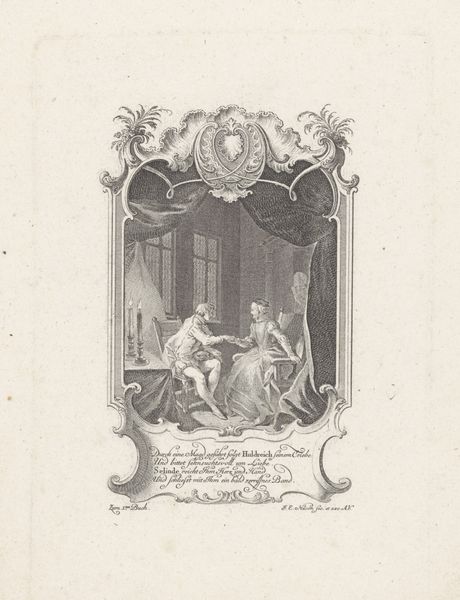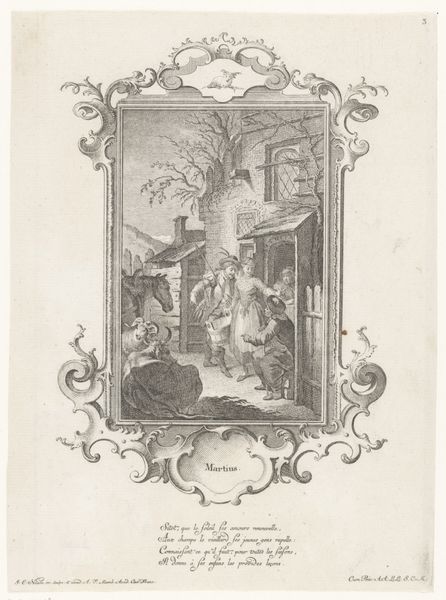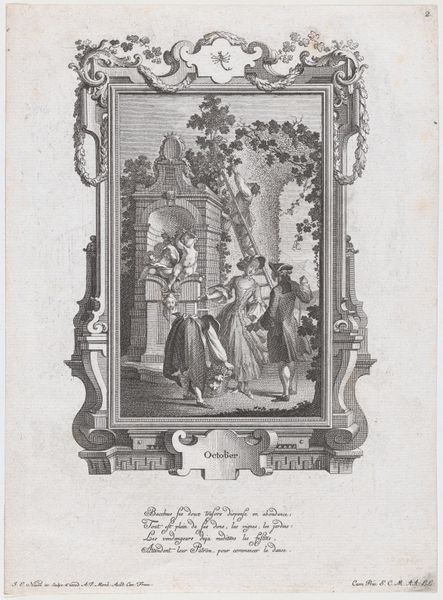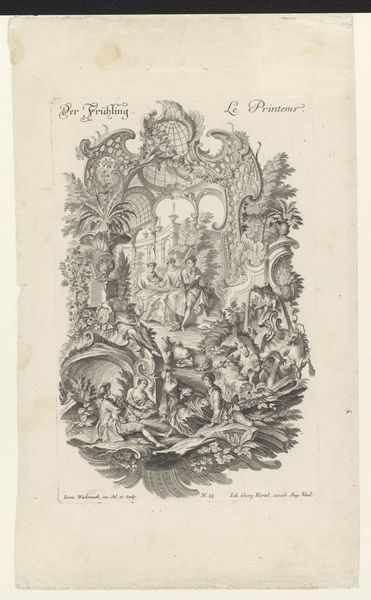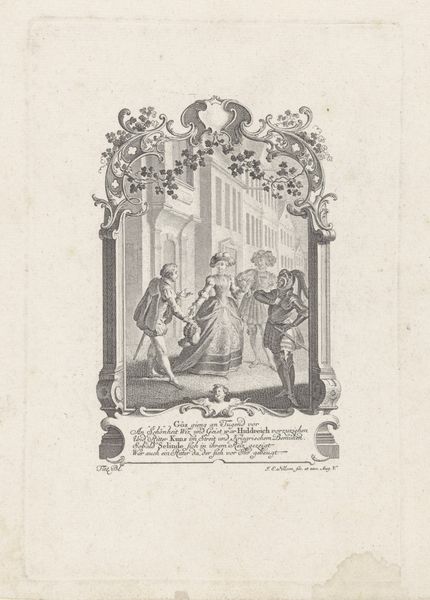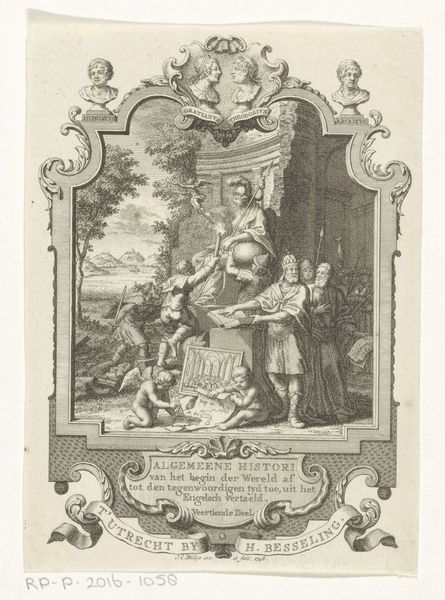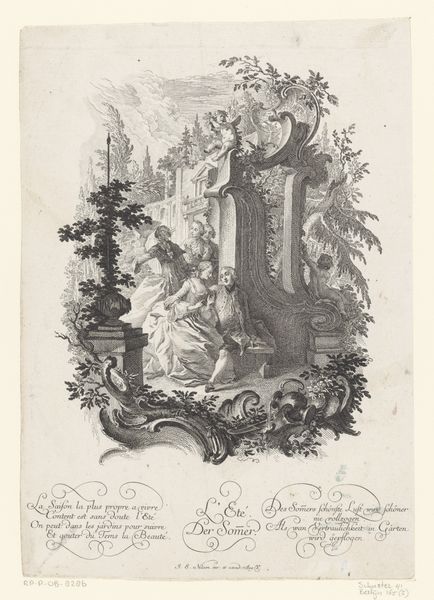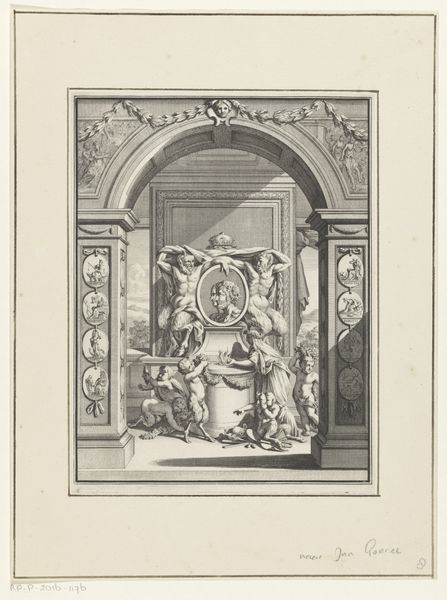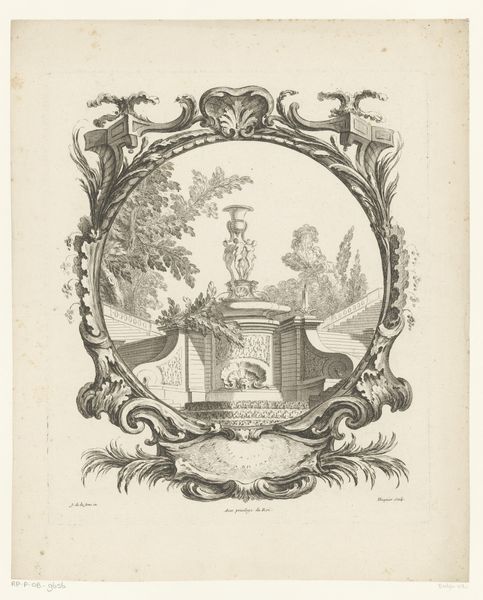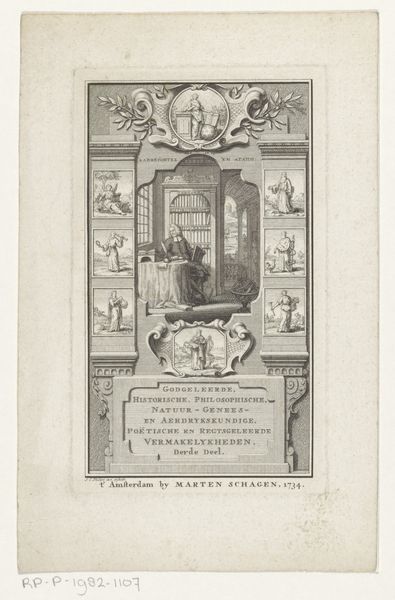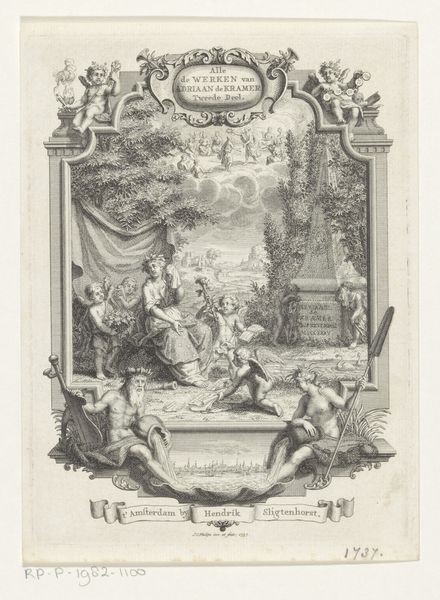
Rocaille omlijsting met een lezende man in een interieur c. 1758 - 1760
0:00
0:00
engraving
#
portrait
#
allegory
#
baroque
#
old engraving style
#
figuration
#
line
#
history-painting
#
academic-art
#
engraving
Dimensions: height 195 mm, width 126 mm
Copyright: Rijks Museum: Open Domain
This engraving, made by Jeremias Wachsmuth, shows a man reading in an ornate interior. The printmaking process itself is key to understanding its purpose, and its place in 18th-century society. Engraving is an intaglio process, meaning that the image is incised into a metal plate, here most likely copper. The artist would have used a tool called a burin to carve lines into the surface, creating grooves that hold ink. The plate is then inked, the surface wiped clean, and the print is made by pressing paper against the plate with considerable force. The resulting crisp, precise lines were ideal for reproducing detailed images, and this made engravings perfect for disseminating information widely. They played a crucial role in circulating visual ideas at a time before photography or digital media. This print, with its elaborate Rococo frame, is a testament to the power of printmaking to democratize art and knowledge.
Comments
No comments
Be the first to comment and join the conversation on the ultimate creative platform.


